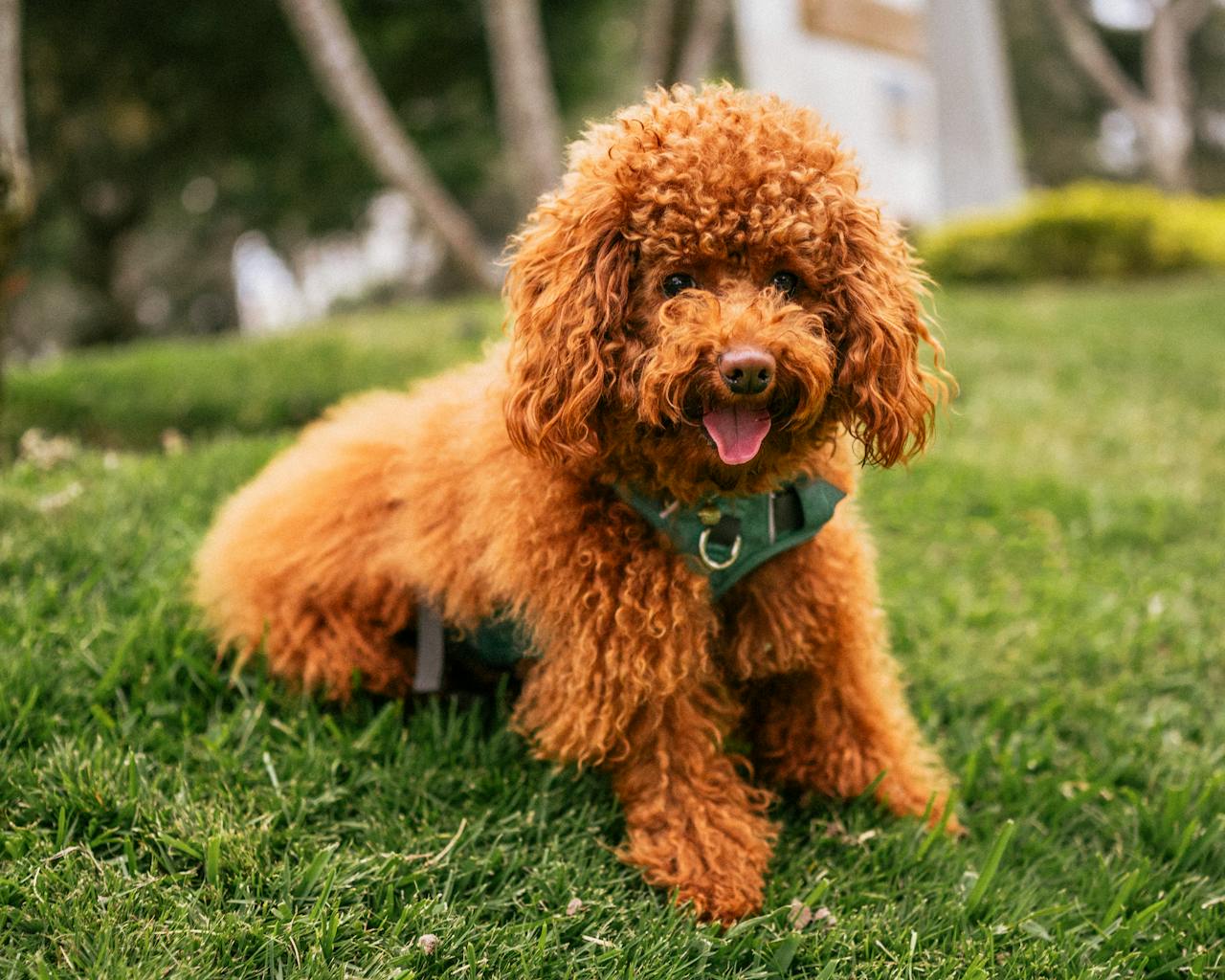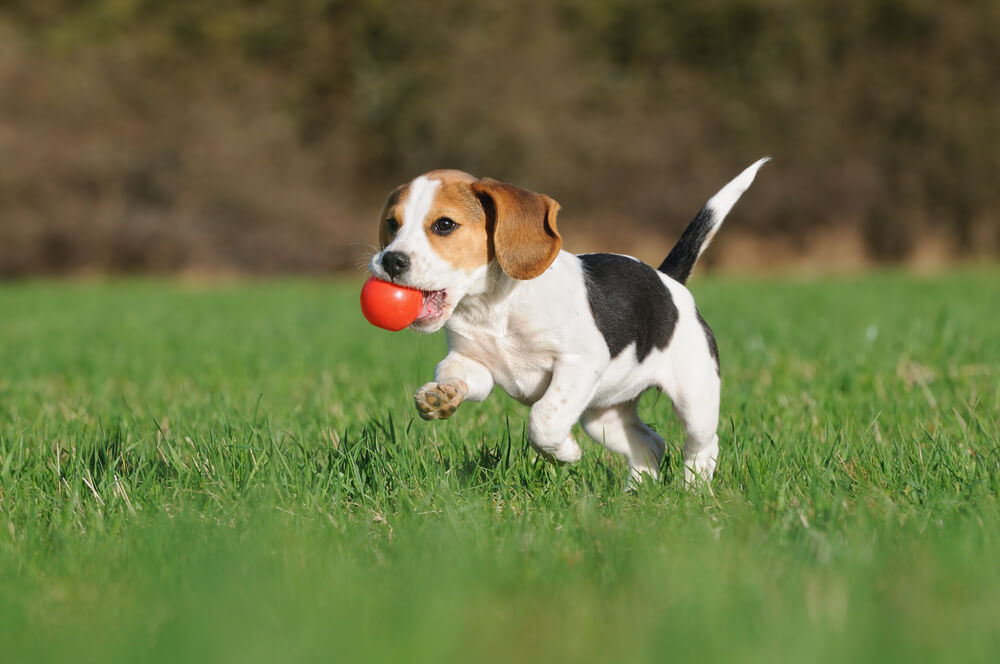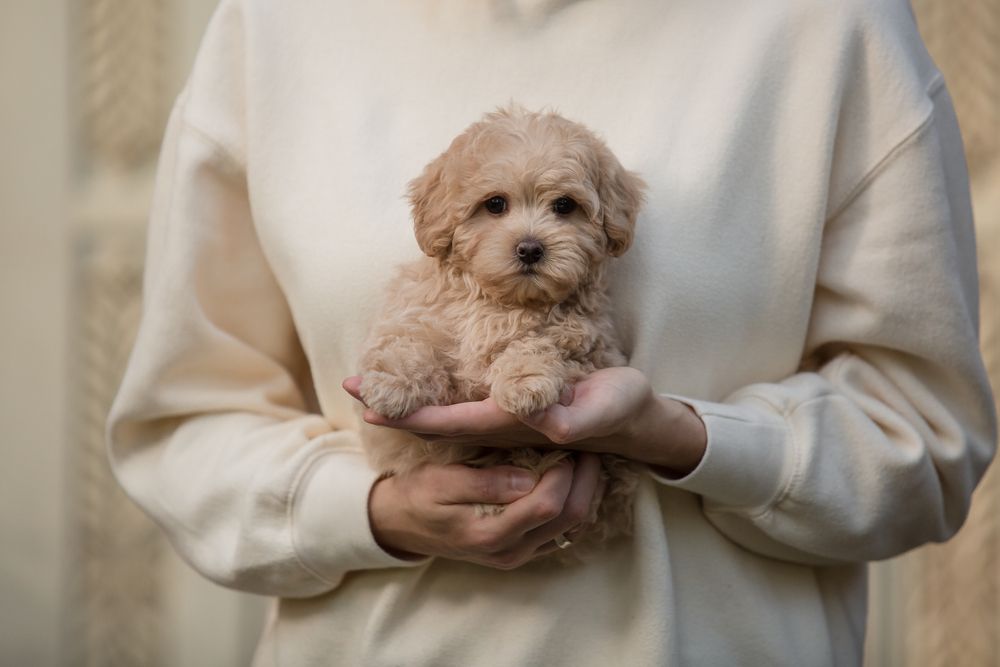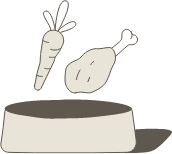Hey Ollie blog readers! We’re offering you an exclusive 60% OFF your starter box! Try now!
If you’ve ever looked out at your yard to find your dog calmly munching on grass, you’re not alone. Grass eating is one of the most common behaviors that puzzles dog parents. It’s easy to assume something’s wrong—especially if your dog vomits afterward—but in many cases, this behavior is harmless and surprisingly normal.
While occasional grass nibbling doesn’t always signal a health problem, frequent or obsessive grass eating might be worth a closer look. There are several possible reasons why dogs eat grass, from instinctive behavior to boredom, digestive upset, or even nutritional gaps in their diet.
In this guide, we’ll explore why dogs eat grass, when it’s cause for concern, and how to reduce the behavior—including how switching to a more complete, fresh diet like Ollie Fresh Dog Food can help support overall health and reduce the need for odd grazing habits.
Is It Normal for Dogs to Eat Grass?
Yes, it’s actually quite common for dogs to eat grass, and in most cases, it’s not a sign of serious illness. Many dogs will occasionally graze on grass during walks or while spending time in the yard. Some chew and swallow it; others nibble and move on. This behavior has even been observed in wild canines like wolves and foxes.
Veterinarians generally consider grass eating to be a normal canine behavior, especially if your dog is otherwise healthy and not showing signs of distress. That said, it can still be helpful to understand why your dog might be eating grass—especially if it’s happening frequently, causing vomiting, or leading to changes in appetite or behavior.
In some cases, regular grass eating could be a sign that your dog is seeking additional fiber, settling a mildly upset stomach, or trying to fulfill a nutritional need. If that’s the case, improving your dog’s diet with more digestible ingredients and balanced nutrition—like what’s found in Ollie Human-Grade Dog Food—may help reduce the behavior over time.
Why Do Dogs Eat Grass?
There’s no single reason why dogs eat grass—it can vary from one pup to the next. For some, it’s an occasional habit driven by curiosity or taste. For others, it might signal an attempt to self-soothe digestive discomfort or respond to a dietary need. Here are the most common explanations:
1. Instinctual behavior:
Wild canines often consume parts of plants, including grass, as part of their natural foraging behavior. Some researchers believe dogs inherited this instinct. In the wild, plant material may help push parasites through the digestive system, offering a survival advantage.
2. Digestive discomfort or nausea:
Some dogs may turn to grass when they feel slightly unwell. The idea is that swallowing blades of grass may help induce vomiting and relieve stomach upset. However, it’s unclear whether dogs eat grass with the intent to vomit or if vomiting is simply a result of eating coarse plant material.
3. Nutritional deficiency:
Dogs may seek out grass if their diet is missing certain nutrients—especially fiber. A diet low in digestible fiber can sometimes lead dogs to consume non-food items like grass to support digestion or encourage bowel movements.
4. Boredom or anxiety:
For some dogs, grass eating becomes a repetitive behavior when they’re bored, under-stimulated, or stressed. Dogs without enough mental and physical enrichment may graze simply to pass the time or self-soothe.
5. Taste or texture:
Some dogs may just enjoy the sensation or flavor of grass, especially when it’s fresh and moist. In these cases, it’s more about preference than need.
How Ollie Helps:
If grass eating is linked to poor digestion or nutritional imbalance, improving your dog’s diet is a smart first step. Ollie Fresh Dog Food contains real, whole ingredients—including fruits, vegetables, and fiber-rich foods—that support digestive health and may help reduce the need to seek nutrients elsewhere. A fresh, complete diet can help your dog feel satisfied and balanced from the inside out.
Why Do Dogs Eat Grass and Then Vomit?
This is one of the most common concerns from dog parents: the pattern of eating grass followed by vomiting. The truth is, not all dogs vomit after eating grass—but when they do, it’s often because the blades irritate the stomach lining or the grass is eaten quickly and in large amounts.
In some cases, a dog may already be feeling slightly nauseated and instinctively eats grass as a way to trigger vomiting and relieve that discomfort. Other times, vomiting may be coincidental or caused by the grass itself rather than an underlying issue.
Occasional vomiting after grass eating isn’t always alarming—especially if your dog returns to normal behavior quickly. However, frequent vomiting, lethargy, or appetite changes could signal an underlying problem that needs attention.
If your dog is using grass regularly to cope with stomach discomfort, it may be worth examining their diet and gut health more closely. Poor digestion or sensitivity to certain ingredients could be contributing to the problem.
Is It Dangerous for Dogs to Eat Grass?
In most cases, grass eating isn’t dangerous—but it depends on what’s on the grass more than the grass itself. The biggest concerns come from potential exposure to chemicals, parasites, or toxic plants that may be present in the yard or public spaces.
Grass treated with fertilizers, pesticides, or herbicides can be harmful if ingested. These chemicals may irritate the digestive system or cause more serious health issues depending on the product and amount consumed. Likewise, parks or neighborhood lawns may contain residues or contaminants you’re not aware of.
Another risk is that certain weeds or garden plants mixed in with the grass could be toxic to dogs. Additionally, grass in outdoor areas can be a source of intestinal parasites or bacteria, especially if other animals have urinated or defecated nearby.
If your dog eats grass occasionally and shows no signs of illness, it’s likely harmless. But if the behavior is frequent or followed by vomiting, diarrhea, or lethargy, it’s worth speaking with your vet—especially if there’s a chance your dog was exposed to something unsafe.
Quick Tip: If your dog enjoys nibbling on grass, try to keep them away from treated areas and offer them a safe, chemical-free space to roam when possible.
How to Stop a Dog From Eating Grass
If your dog’s grass eating is excessive, compulsive, or causing frequent vomiting, there are a few simple steps you can take to reduce or stop the behavior.
First, rule out any underlying medical or dietary issues with a veterinary exam. If your dog is healthy, focus on enrichment and feeding changes to address possible triggers like boredom or nutritional imbalance.
Start by ensuring your dog gets enough physical and mental stimulation each day. Long walks, play sessions, puzzle feeders, and training activities can help keep your dog engaged and reduce grazing behaviors that stem from boredom or stress.
Next, take a close look at their diet. Dogs lacking fiber or other key nutrients may turn to grass as a way to supplement what they’re missing. Transitioning to a balanced, whole-food diet can make a big difference.
When to See a Vet
Occasional grass eating with no other symptoms is typically nothing to worry about. However, if your dog’s grass-eating habit becomes frequent, compulsive, or is accompanied by other warning signs, it’s time to check in with your veterinarian.
You should schedule a vet visit if your dog:
- Vomits often after eating grass
- Shows signs of lethargy, diarrhea, or loss of appetite
- Suddenly starts eating grass more than usual
- May have been exposed to lawn chemicals or toxic plants
- Has a history of digestive issues or allergies
Your vet may perform a physical exam, check for parasites or gastrointestinal problems, and review your dog’s diet to rule out any nutrient deficiencies. If needed, they can recommend dietary adjustments or further testing to address underlying causes.
Final Thoughts on Dogs Eating Grass
Grass eating in dogs is usually harmless and instinctual, but when it becomes frequent or is linked to vomiting or other symptoms, it may be worth exploring further. Whether it’s triggered by boredom, digestive discomfort, or dietary needs, it’s something you can often manage with the right care and attention.
Feeding your dog a balanced, nutrient-rich diet is one of the most effective ways to support their health and reduce the urge to snack on grass. Ollie Fresh Dog Food is crafted with real ingredients that support digestive health, nutrient balance, and overall wellness, giving your dog fewer reasons to turn to the lawn for answers.
If your dog’s behavior changes or you’re concerned about their grass-eating habits, don’t hesitate to speak with your vet. A few simple changes—at mealtime and beyond—can go a long way toward a healthier, happier pup.
Frequently Asked Questions About Dogs Eating Grass
Why is my dog eating grass all of a sudden?
A sudden increase in grass eating could be a response to mild digestive discomfort, a change in environment, or dietary needs not being fully met. It’s worth evaluating recent changes in food, routine, or stress levels.
Is it bad if my dog eats grass and throws up?
Occasional vomiting after eating grass isn’t uncommon, but if it happens regularly, it could point to a stomach issue or food sensitivity. Talk to your vet if vomiting is frequent or paired with other symptoms.
Do dogs eat grass because they’re sick?
Sometimes. Dogs may eat grass to relieve an upset stomach, but not all grass-eating dogs are sick. If your dog seems unwell in other ways, it’s best to consult a veterinarian.
Can eating grass hurt my dog?
Grass itself usually isn’t harmful, but chemicals, parasites, or toxic plants can pose a risk. Supervise your dog and keep them away from treated lawns or unknown areas.
Should I stop my dog from eating grass?
You don’t always need to stop it—especially if it’s infrequent and harmless. But if it becomes excessive or causes vomiting, take steps to redirect the behavior and support your dog’s digestive health.
Can a change in diet stop my dog from eating grass?
Yes, in some cases. Dogs may eat grass due to nutrient deficiencies or poor digestion. Feeding a complete, fresh diet like Ollie Fresh Dog Food can help reduce the behavior by supporting gut health and providing the nutrients dogs need.
Tagged As:
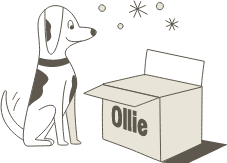
The nutrition your dog needs,
the food they want.

Enjoying our articles? Subscribe our Newsletters and get new articles directly to your inbox
You might also like
18 July 2025
6 MINS READ
Can You Mix Fresh Dog Food With Kibble?
If you’re feeding your dog kibble but want to upgrade their bowl, you’re not alone. Many pet parents ask if they can mix fresh dog food with kibble to get some of the benefits of fresh food wi…
by Ollie Pets
18 July 2025
5 MINS READ
Does Fresh Dog Food Help With Weight Loss?
If you’ve noticed your dog carrying a few extra pounds, you’re not alone. According to the Association for Pet Obesity Prevention, over half of dogs in the U.S. are overweight or obese. Extra …
by Ollie Pets
18 July 2025
4 MINS READ
Is Fresh Dog Food Cooked or Raw?
When you hear “fresh dog food,” it’s normal to wonder if that means raw meat or something cooked. After all, fresh just means it’s not dry kibble or canned food packed with preservatives. …
by Ollie Pets
